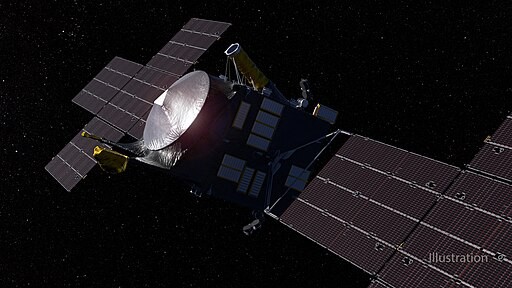Since the invention of motion pictures, it has become a medium for telling stories to the audience. Film technology has continuously improved for more than a century, enabling connections between people worldwide. In a recent breakthrough, experts delivered a short video clip millions of miles away from Earth.

Signal Transmission Test
On October 13, NASA sent the Psyche spacecraft to visit 16 Psyche, a giant metal-rich asteroid in the central belt between Mars and Jupiter. It was launched from Kennedy Space Center in Florida atop a SpaceX Falcon Heavy Rocket.
It was only last November when the flight laser transceiver conducted its initial "first light" test, where it sent a signal to Earth from 10 million miles (16 million kilometers) away. Most of the signals used in testing have been random packets of information, so JPL scientists tried to include a bit of fun into this groundbreaking demonstration.
Streamed Laser Message
Inside this spacecraft, NASA conducted a trial that demonstrated humanity's incredible feats of engineering and orbital dynamics. On December 11, the Jet Propulsion Laboratory (JPL) performed the Deep Space Optical Communications (DSOC) experiment, where an ultra-high definition streaming video of a cat was sent back to Earth. The cat, Taters, was shown chasing a laser pointer from 19 million miles (31 million kilometers) away. Taters is an orange tabby cat owned by a JPL employee.
The 15-second video clip was beamed using a flight laser ultra-high definition streaming video transceiver, a new instrument developed by JPL. It transmitted the signal in near-infrared laser light to the Hale Telescope at the Palomar Observatory in the California Institute of Technology. The signal took 101 seconds to reach Earth at a speed of 267 megabits per second (Mbps). By comparison, the average broadband speed in the US is around 219 Mbps, and 92 Mbps in the UK.
One of the goals of this project is to demonstrate the transmission of broadband video across millions of miles, according to DSOC project manager Bill Klipstein. Nothing on Psyche spacecraft generates video data, so NASA usually sends packets of randomly generated test data. To make this historical event more memorable, they decided to work with designers at JPL to create an entertaining video that captures the essence of the demo as part of the Psyche mission.
According to the project's lead scientist, Ryan Rogalin, the flight laser transceiver could send the video faster than most broadband internet connections despite transmitting from millions of miles away. In fact, after being received at Palomar, the video was sent to JPL over the internet, whose relationship was even slower than the signal from deep space.
Although the experiment is adorable to demonstrate the groundbreaking technology, NASA officials claim that the trial also lays the foundation for deep space exploration. Since increased bandwidth is needed for future space missions, the agency looks forward to the continued advancement of this technology and the transformation of communication during interplanetary journeys.
RELATED ARTICLE: Blue Origin Beats SpaceX After NASA Chooses Jeff Bezos' Company for Psyche Mission
Check out more news and information on Psyche Mission in Science Times.














